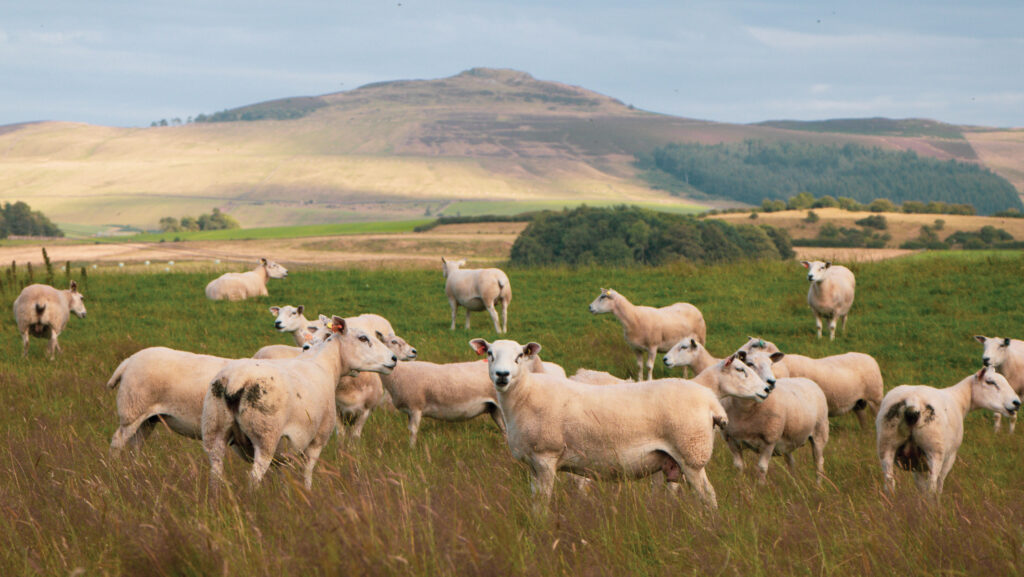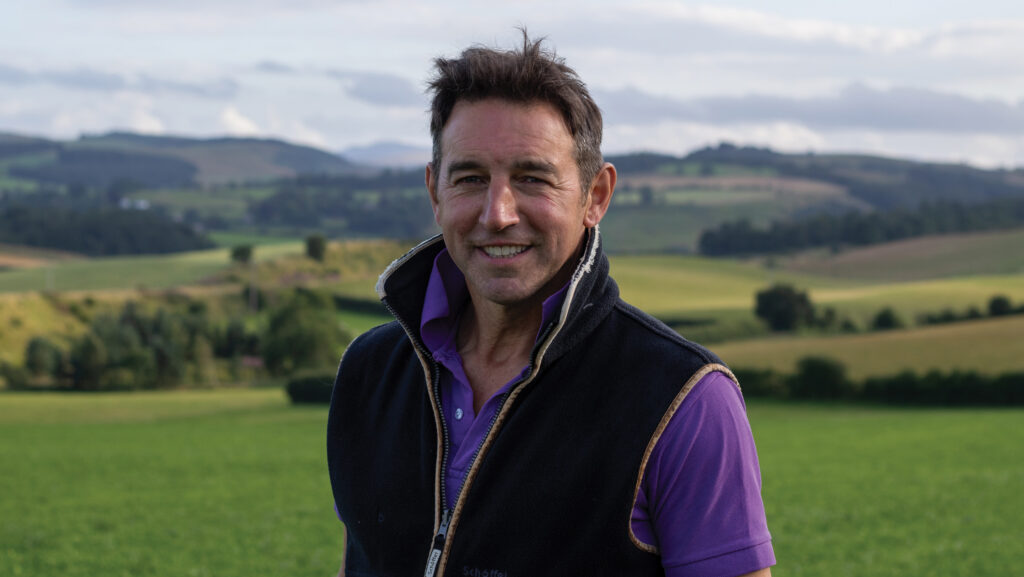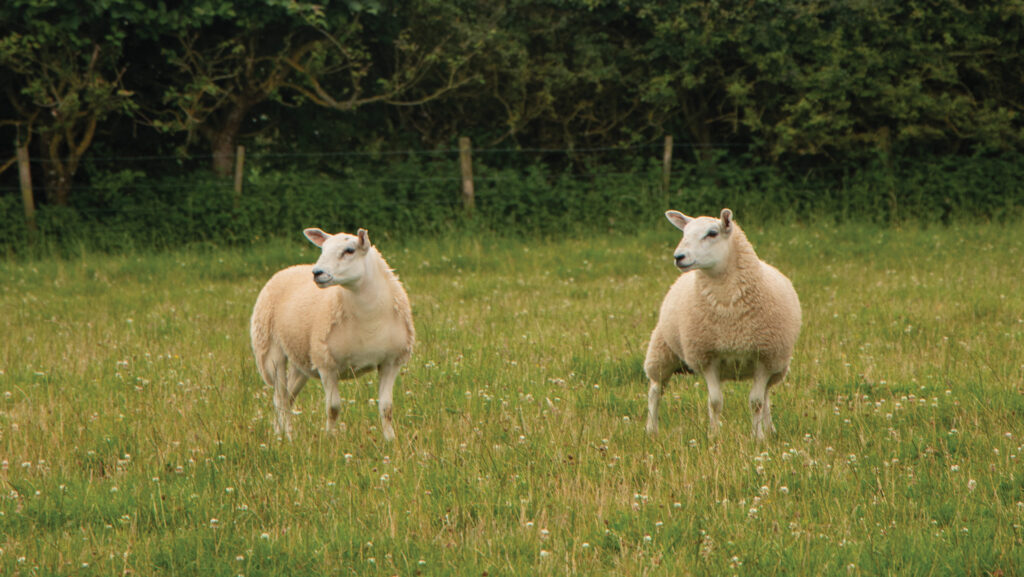How one farm protects flock health with ultrasound scans
 © RPMedia
© RPMedia Ultrasound lung scanning is being used as part of the armoury to protect flock health at one Scottish Borders farm.
Rob Parrish runs a 364ha (899-acre) organic mixed enterprise in partnership with his father Deryk, mother Nancy and wife Phily. He believes health is the linchpin to good productivity.
Alongside a robust vaccination plan, and considered purchasing policy, he started ultrasound lung scanning last year for the infectious lung disease ovine pulmonary adenocarcinoma (OPA).
See also: What is OPA and how can it be prevented or controlled?
OPA, which is caused by jaagsiekte sheep retrovirus, often goes under the radar as few sheep deaths are investigated. It is not a notifiable disease, but prevalence is thought to be widespread.

Rob Parrish © RPMedia
Breeding
Buying in stock at Hassendeanburn Farm, near Hawick, has been limited to the purchase of 40 Scotch Mules each year.
To protect flock health status, these have been sourced from Billy Kerr, Sauchriemains, at the Castle Douglas sale each August for the past decade and more. The Kerrs scan for OPA, are enzootic abortion accredited and screen for maedi visna.
The Mules are mated to Texels to produce replacement ewe lambs for the commercial flock. These crosses are then bred to home-bred pure Suffolks to supply finished organic lambs. Meanwhile, hoggs are tupped with Shetlands for easy lambing.
Farm facts: Hassendeanburn Farm, near Hawick
- 364ha organic farm, with 141ha owned and the rest rented on a farm business tenancy
- Growing 80ha milling wheat, 28ha winter wheat, 10ha spring oats, 10ha spring barley and 20ha wholecrop triticale, oats, barley and peas, plus 20ha in woodland and environmental stewardship
- 250-300 bought-in stores finished annually and sold to Dovecote Park
- Bullocks averaging 380kg deadweight at R3H and heifers 340kg
- Lambing 690 ewes and 150-200 hoggs indoors
- Lamb sold to ABP or Dunbia, averaging 19.4kg deadweight at R3L/Us
OPA scanning
The decision to scan for OPA was driven by a quest to limit disease. Most sheep show signs of the disease between three and five years of age, so Rob asked sheep vet Dr Phil Scott to scan all Mule ewes and older Texels last October.
Phil has been scanning for OPA for a decade and scans 50,000-70,000 sheep annually. He found two of Rob’s with OPA lesions and two that had small lesions.
Rob says: “We culled the two with lesions straight away and thought we would rescan the two with suspected lesions, but they started to lose condition, so we culled them, too.
“Phil said if we did have a problem with OPA, it would be rife because [our] sheep are housed during the winter, so it is quite comforting to know we didn’t have a major problem.”
The process was quite labour-intensive, admits Rob: “We had 10 at a time in a pen, and we had to catch them so Phil could scan both sides of the chest while they were standing.”
Despite this, Rob says he will continue scanning every year, possibly using a modified combi clamp to reduce handling.
“We are going to take advice from Phil, but we are considering scanning the whole flock.”
Scanning costs about £1 a sheep but was subsidised through the Preparing for Sustainable Farming Health and Welfare intervention. Scottish farmers can claim £250 for each investigation, with funding limited to two investigations annually.
Screening for iceberg diseases is also available to farmers in England through the Animal Health and Welfare Pathway.
Phil says in most flocks that scan, a 50% reduction in annual OPA incidence can be achieved year-on-year, provided farmers continue to scan regularly.
“Maintaining a closed flock is the best way to reduce the spread, but this limits genetic improvement unless you use AI [artificial insemination],” he adds.

© RPMedia
The numbers
- 203-210 Typical scanning percentage
- 187 Percentage of lambs sold from scanning (not including ewe lambs)
- 400 Daily liveweight gains (grams) of the fastest grown lambs in 2024
Quarantine
Running a closed flock is not an option for the Parrishes, but they are taking steps to minimise risk as much as possible.
For the past 15 years, they have bred their own Texel and Suffolk rams from flocks of 20 pure ewes, with new rams now only sought every two to three years rather than annually.
“We run a closed flock as much as we can and are scrupulous about what we buy in,” says Rob.
Bought-in ewe lambs are kept separately until lambing, and any rams are quarantined for six to eight weeks.
They are treated with group 4-AD wormers and are monitored closely for foot issues and scab.
“Buying in disease is a major concern. There’s more scab and wormer resistance than before,” he admits.
Vaccination
When it comes to disease, he believes prevention is better than cure. An annual flock health plan is carried out with their vet, Urs Schaeli, from Cheviot Vets.
The whole flock is vaccinated against clostridial disease and pasteurellosis. Sheep are also protected against foot-rot, enzootic abortion and toxoplasmosis.
However, Rob admits it has been difficult securing vaccines because of continuing shortages.
“I know producing a live vaccine can be difficult, but timing is critical – you only have a small window of opportunity to get ewe lambs vaccinated for tupping.”
Lambing
The Parrishes’ high-input system demands strong output, and Rob says good flock health, alongside quality forage and breeding, are the other critical elements for his sheep system.
Ewes tip the scales at 90-100kg, but 92% of lambs were sold before 16 weeks this year, having been fed grass alone.
Only the hoggs with twins receive a small amount of concentrate.
“The aim of the game is for as many ewes as possible to rear two lambs. Because we run a high-input system, we need to compensate that with productivity.
“On our farm, I don’t see us running more sheep to produce fewer lambs,” says Rob.
Two casual labour units are employed at lambing, but farming is mainly a family affair, with Rob and Phily’s children, Sam and Jasmine, helping with jobs.
“It’s a real team effort. The key to success is everyone’s attention to detail.”
Teaser tups are used for 17 days, and two tups typically serve 70-80 ewes thereafter.
Sheep are housed after Christmas until lambing, which starts on 17 March.
After scanning in January, they are split into groups depending on litter size and fed a total mixed ration comprising straw and silage, with home-grown barley and soya introduced as lambing approaches.
Ewes and lambs are turned out to fields 48 hours after lambing, with lambs in same-age groups.
“It helps from a disease perspective, [and] when it comes to drawing lambs, the biggest are in the same fields,” says Rob, adding that all ram lambs are left entire unless they are a triplet.
Grass leys are reseeded every six years, with red and white clover used extensively to fix nitrogen. Once lambs are weaned, they graze silage aftermaths.
Rob finishes: “Health is critical to performance, which is why we try to cover most bases.
“If sheep are not healthy, they are not going to perform.”
